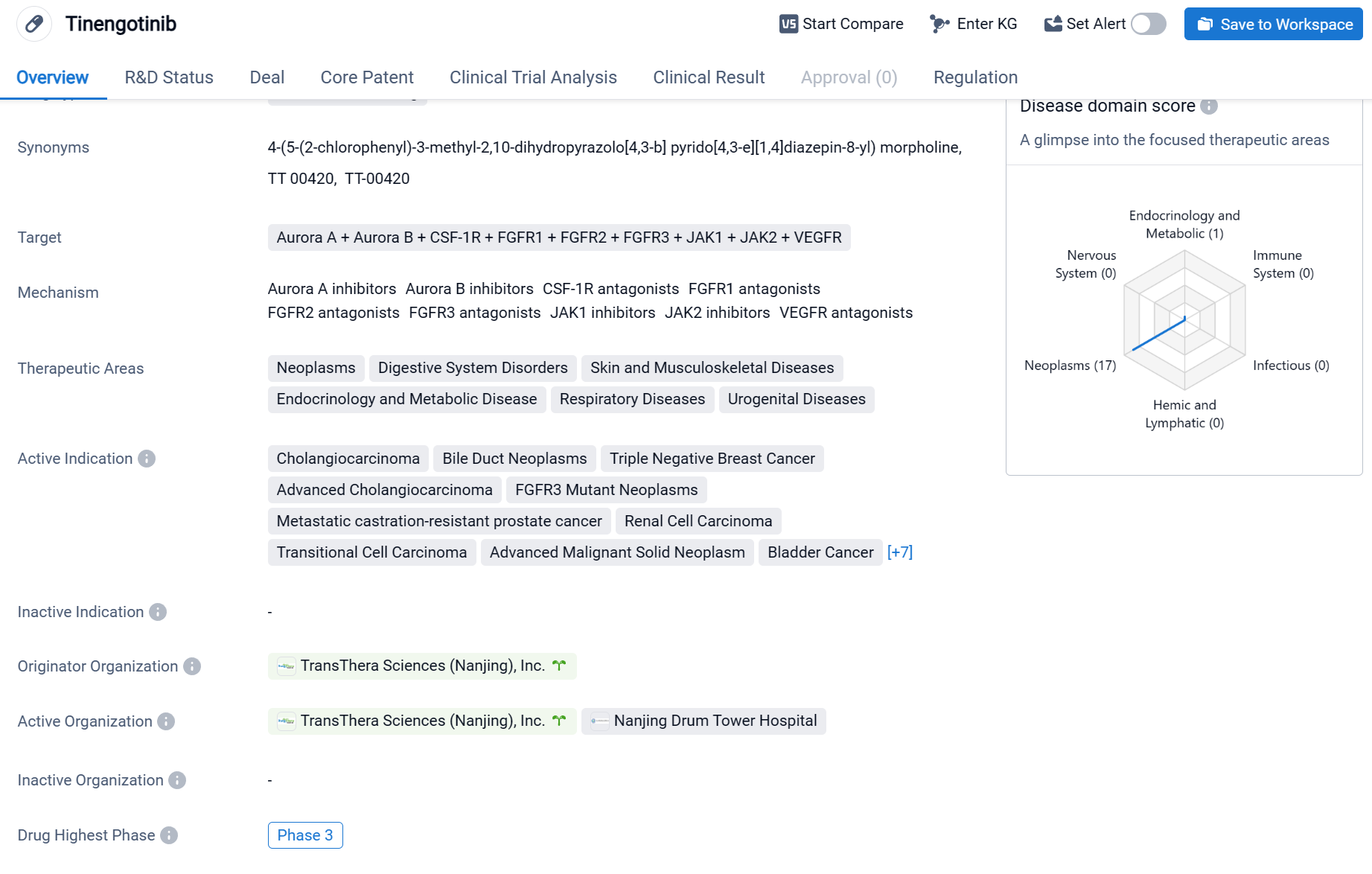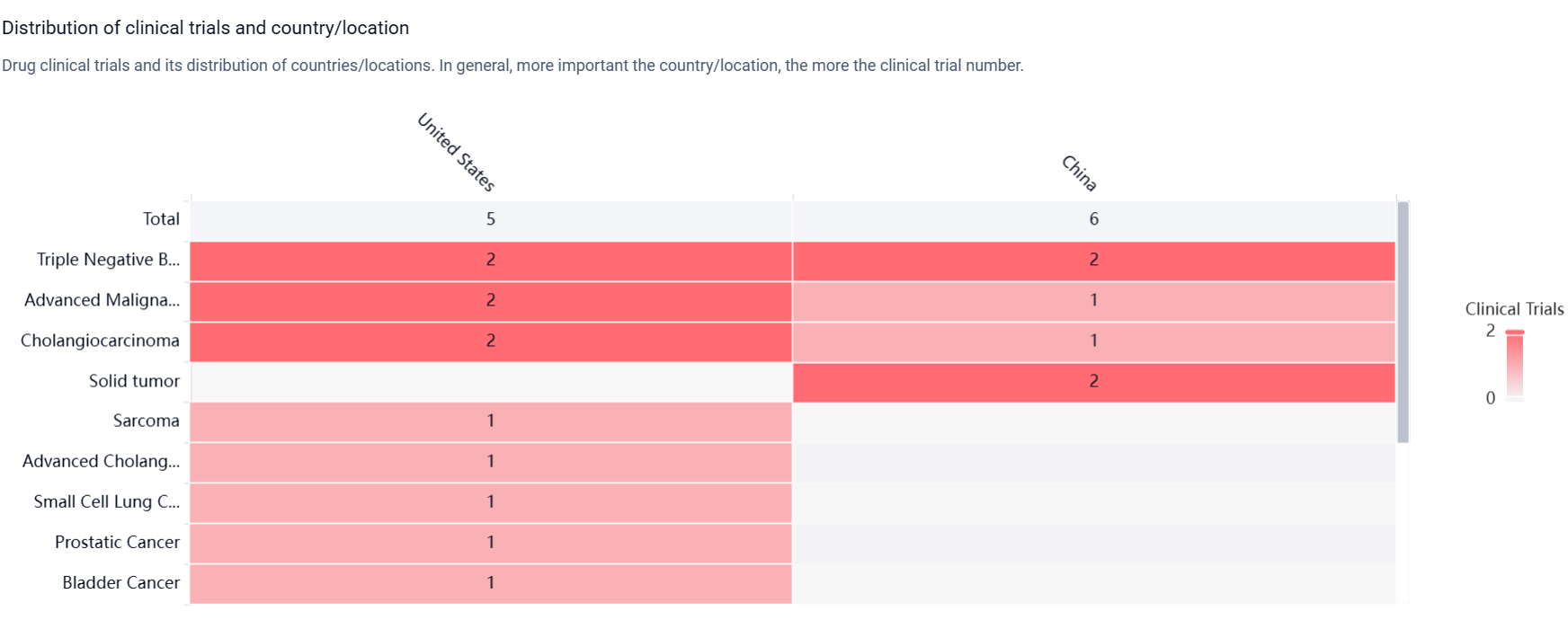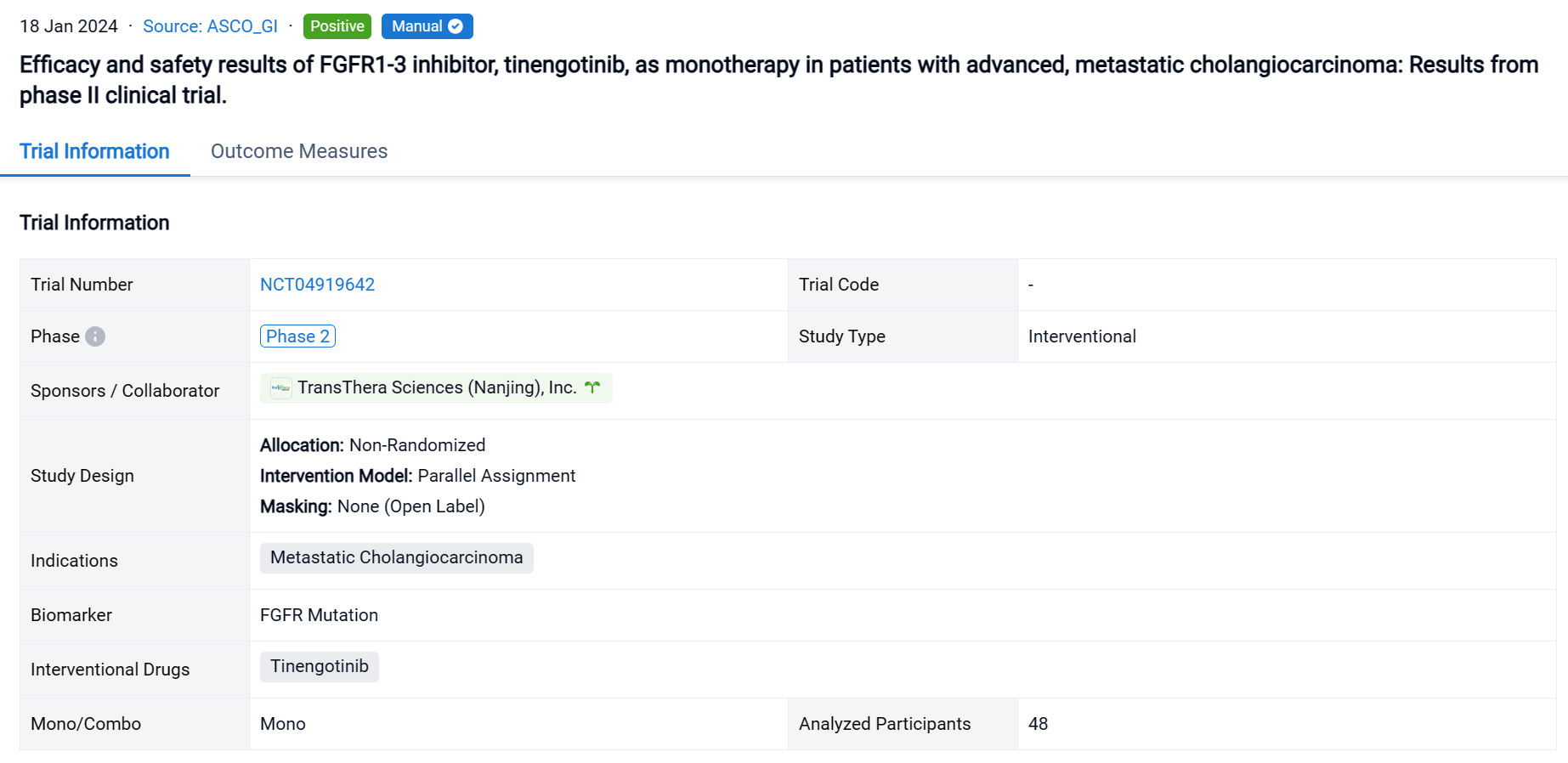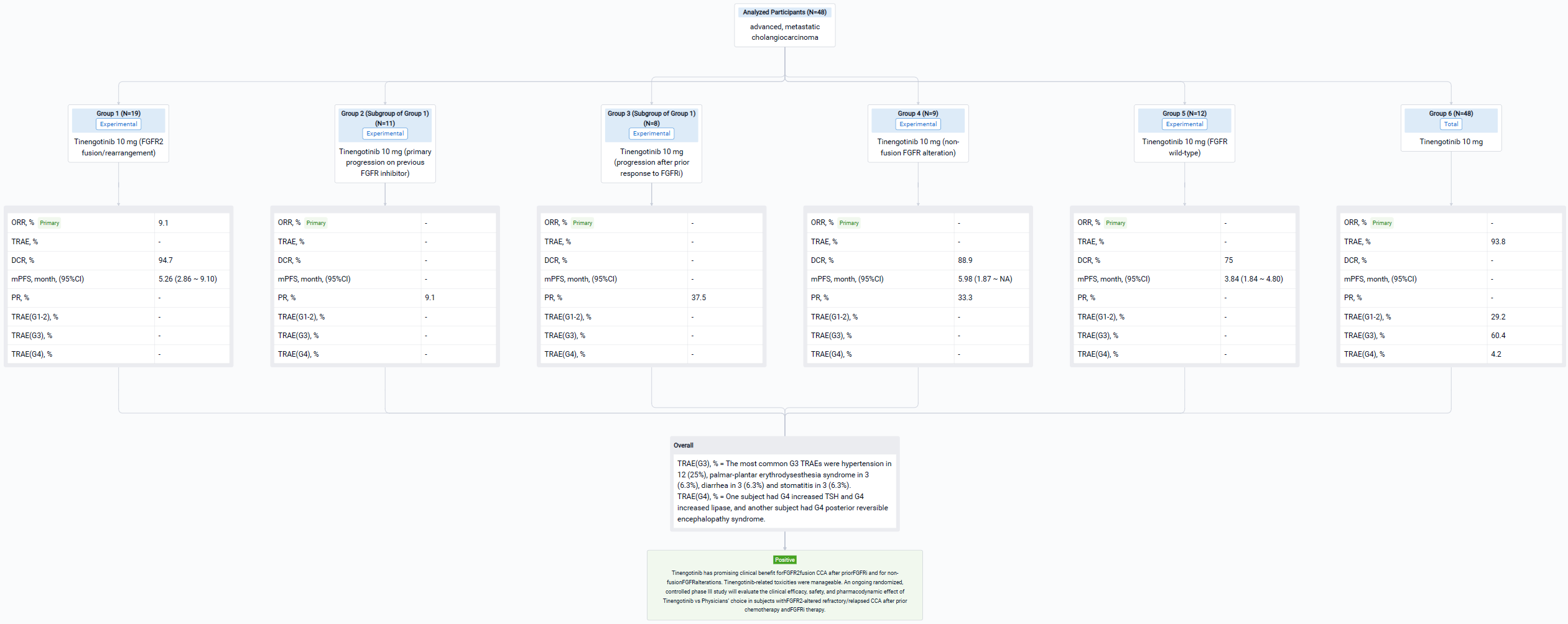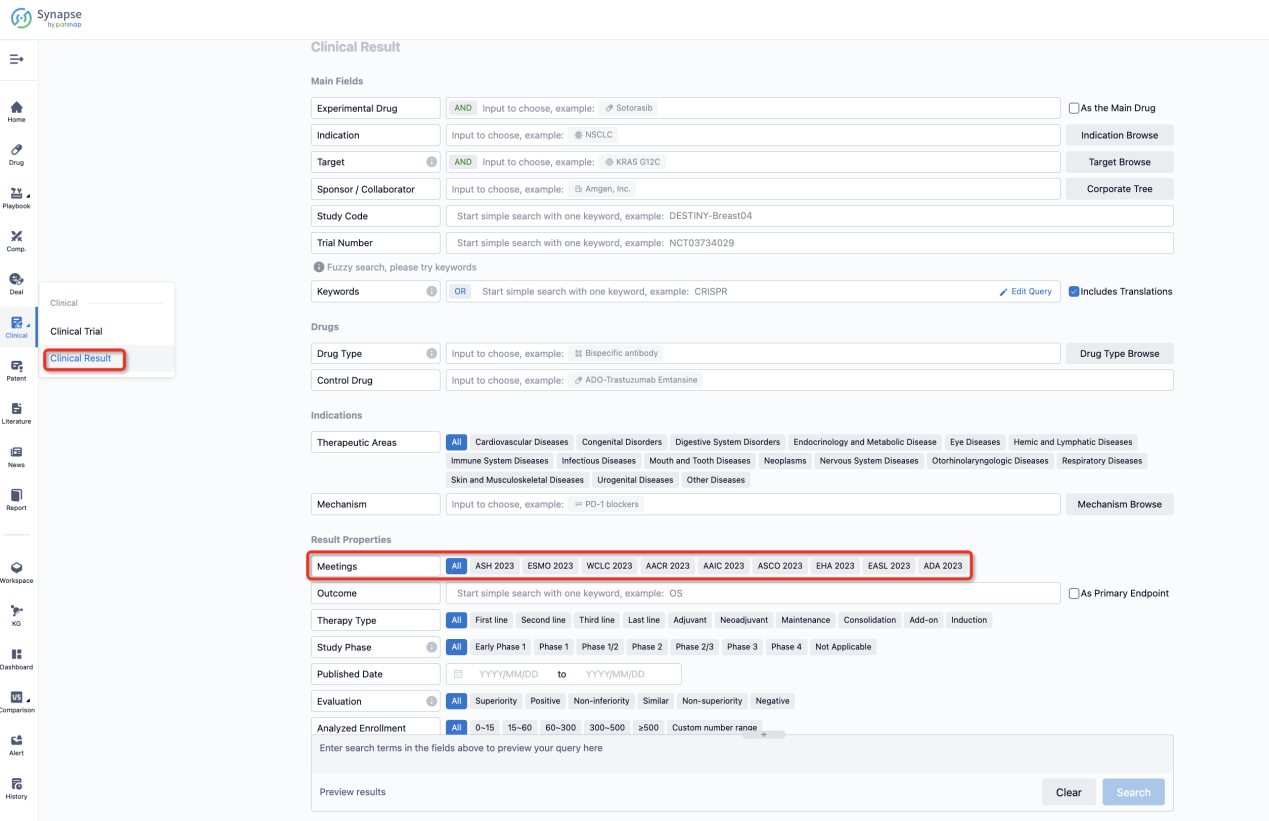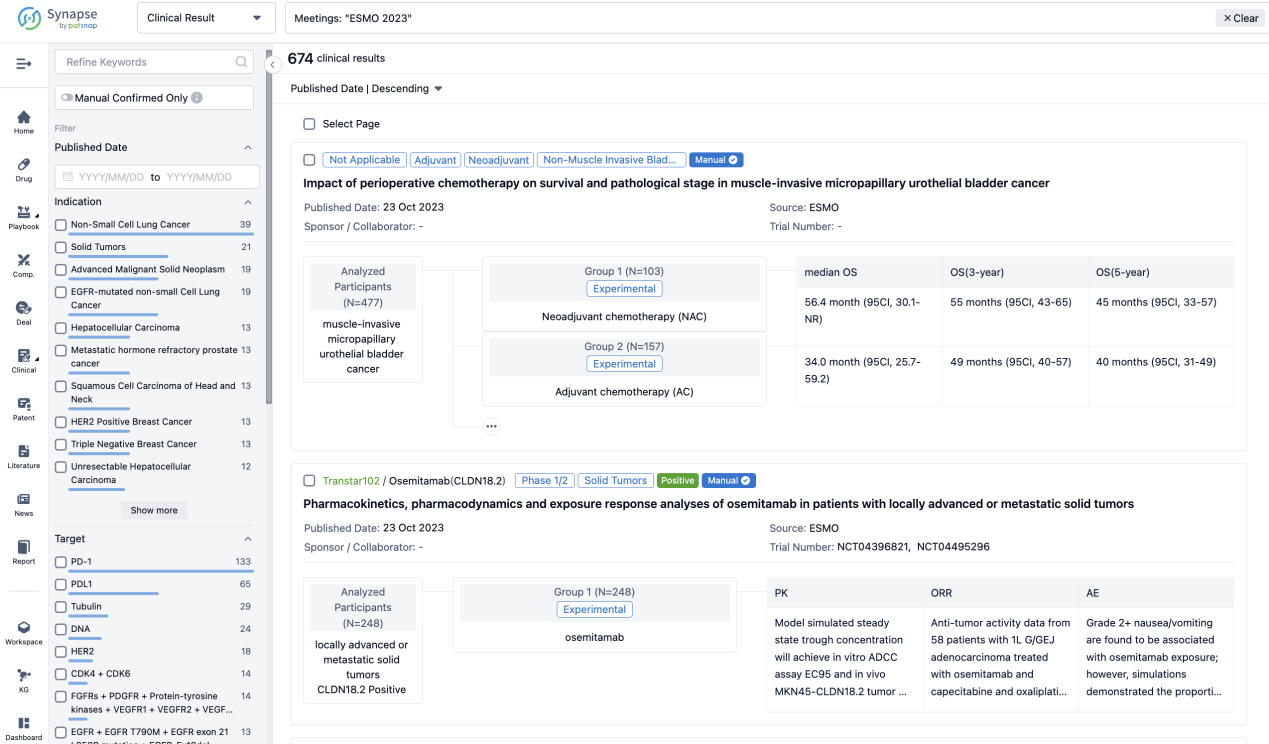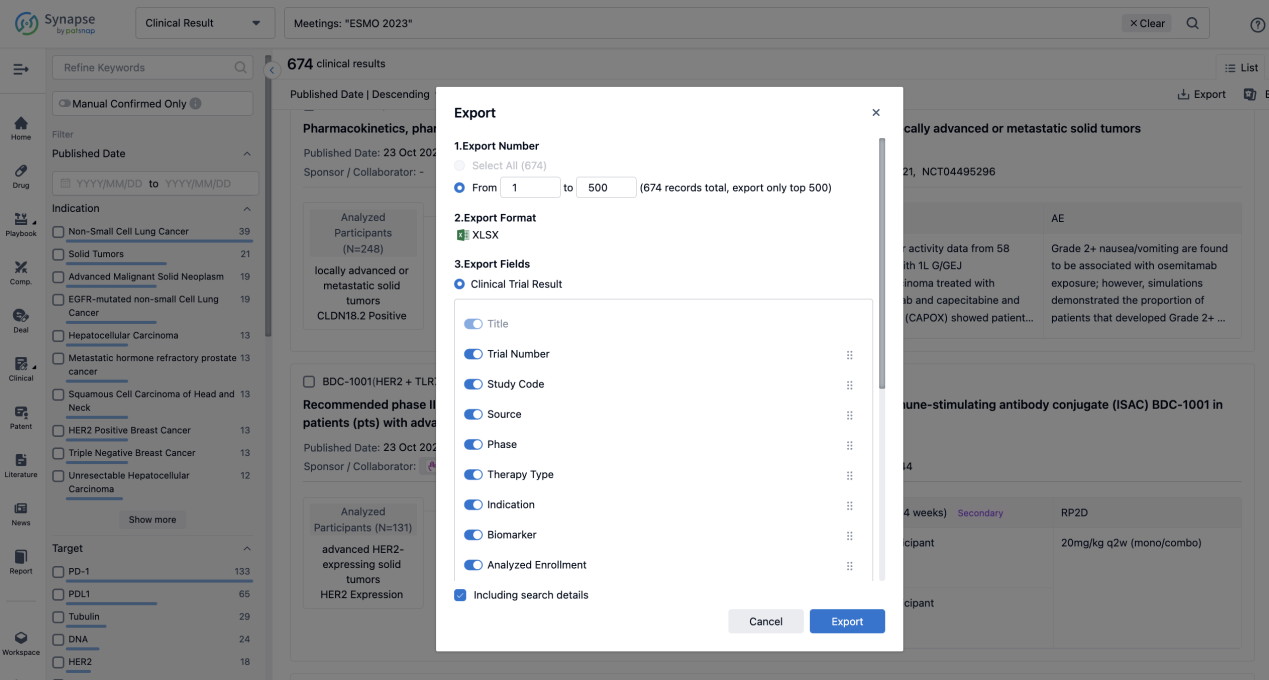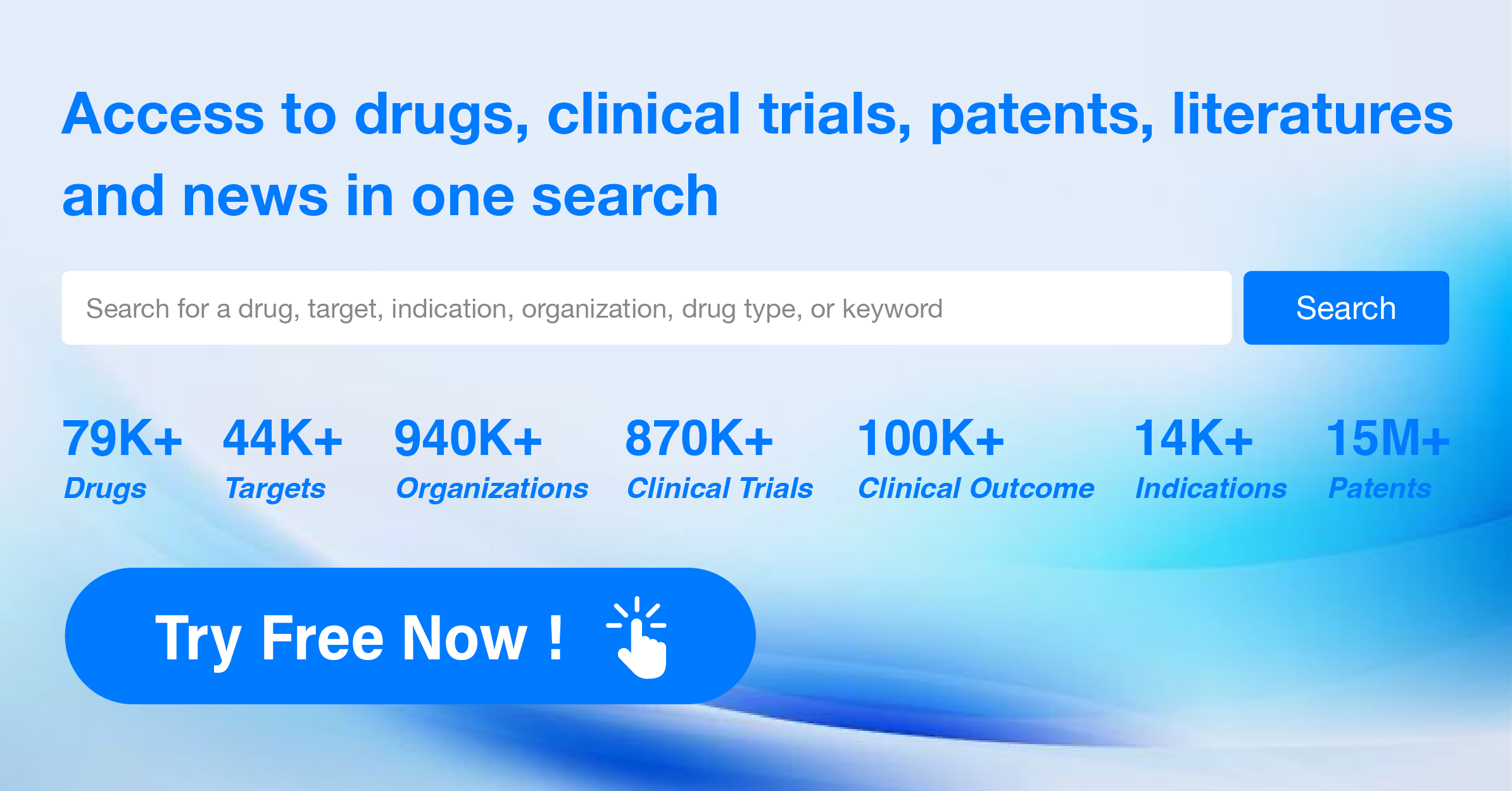An analysis of Tinengotinib's R&D progress and its clinical results presented at the 2024 ASCO_GI Annual Meeting
Tinengotinib is a spectrum-selective multi-kinase inhibitor with unique binding properties to FGFR, potently inhibited FGFR2 fusion/rearrangement and acquired resistant mutations in pre-clinical models and in phase I trials that included cholangiocarcinoma (CCA) patients (pts). Recently, the promising anti-tumor efficacy of tinengotinib in a phase II clinical trial was reported in the 2024 ASCO_GI.
Tinengotinib's R&D Progress
Tinengotinib is a small molecule drug that targets multiple proteins including Aurora A, Aurora B, CSF-1R, FGFR1, FGFR2, FGFR3, JAK1, JAK2, and VEGFR. It has shown potential therapeutic benefits in various therapeutic areas such as neoplasms, digestive system disorders, skin and musculoskeletal diseases, endocrinology and metabolic disease, respiratory diseases, and urogenital diseases.
According to the Patsnap Synapse, Tinengotinib has reached the highest phase of clinical development, with Phase 3 being the highest globally and Phase 2 being the highest in China. And the clinical trial distributions for Tinengotinib are primarily in the United States and China. The key indication is Triple Negative Breast Cancer.
Detailed Clinical Result of Tinengotinib
This non-randomized, parallel assignment, open-labeled clinical trial (NCT04919642) was aimed to assess the efficacy and safety of tinengotinib in patients with advanced, metastatic cholangiocarcinoma.
In this study, eligible pts with advanced/metastatic CCA who had received ≥ 1 prior systemic chemotherapy therapy and ECOG PS 0 or 1 were treated with tinengotinib 10 mg QD. Four cohorts included: Cohort A1: FGFR2 fusion(s) with primary progression on previous FGFR inhibitor (FGFRi), A2: FGFR2 fusion(s) with progression after prior response to FGFRi (acquired resistance); B: non-fusion FGFR alteration(s): C: FGFR wild-type (FGFRwt). Primary endpoint was objective response rate (ORR) per RECIST v1.1. CTCAE V5.0 was used for safety assessments.
The result showed that as of 7Aug2023, 48 pts with CCA were enrolled, 13 in Cohort A1, 10 in A2, 12 in B, 13 in C. Median age 61.5 [range 25-81] years old, 41.7% male, 58.3% had ≥ 3 lines of prior therapy. ECOG PS 0 in 47.9% pts. Among 35 pts with FGFR alterations, 80.0% had ≥ 1 prior FGFRi therapy, and 97.1% had prior chemotherapy. Forty (40) pts were efficacy evaluable. In A1, 1 out of 11 pts (9.1%) achieved PR with tumor reduction of 31.8%. In A2, 3 out of 8 pts (37.5%) achieved PR with tumor reduction of 40.7%, 47.0% and 54.6%. In B, 3 out of 9 pts (33.3%) achieved PR with tumor reduction of 36.5%, 48.6%, and 60.6%. No PR was observed in C. Overall DCR was 94.7% (18/19) in FGFR2 fusion/rearrangement pts (A1+A2), 88.9% (8/9) in other FGFR alterations pts (B), and 75% (9/12) in FGFRwt pts (C). Median progression-free survival (mPFS) was 5.26 months (95%CI, 2.86-9.10) in A1+A2, 5.98 months (95%CI, 1.87-NA) in B and 3.84 months (95% CI, 1.84-4.80) in C. Among 48 treated pts, treatment-related AEs (TRAEs) occurred in 45 (93.8%) pts, 14 (29.2%) in G1-2, 29 (60.4%) in G3 and 2 (4.2%) in G4. The most common G3 TRAEs were hypertension in 12 (25%), palmar-plantar erythrodysesthesia syndrome in 3 (6.3%), diarrhea in 3 (6.3%) and stomatitis in 3 (6.3%). One subject had G4 increased TSH and G4 increased lipase, and another subject had G4 posterior reversible encephalopathy syndrome. No G5 TRAE was observed.
It can be concluded that Tinengotinib has promising clinical benefit for FGFR2 fusion CCA after prior FGFRi and for non-fusion FGFR alterations. Tinengotinib-related toxicities were manageable. An ongoing randomized, controlled phase III study will evaluate the clinical efficacy, safety, and pharmacodynamic effect of Tinengotinib vs Physicians’ choice in subjects with FGFR2-altered refractory/relapsed CCA after prior chemotherapy and FGFRi therapy.
How to Easily View the Clinical Results Using Synapse Database?
If you want to know the other clinical results of popular conferences, please lick on the “Clinical Results” on the homepage of Patsnap Synapse, which provides multi-dimensional screening and filtering of drugs, indications, targets, companies, result evaluation, release date, popular conferences, etc. to help you quickly locate the data you need.
Select the clinical meeting you are interested in, such as ESMO. In the results, you can quickly locate the data you want to view by indication, phase and drug name.
A single result clearly shows important information such as registration number, phase, indication, Sponsor/Collaborator, biomarker, Trial number, dosing regimen and more.
If you would like to view more information about this result, you can go to the result detail page by clicking on the title.
Above the headings, we provide the original source of the outcome data. The basic information is supplemented with more information beyond the list, such as company, study. design, etc.
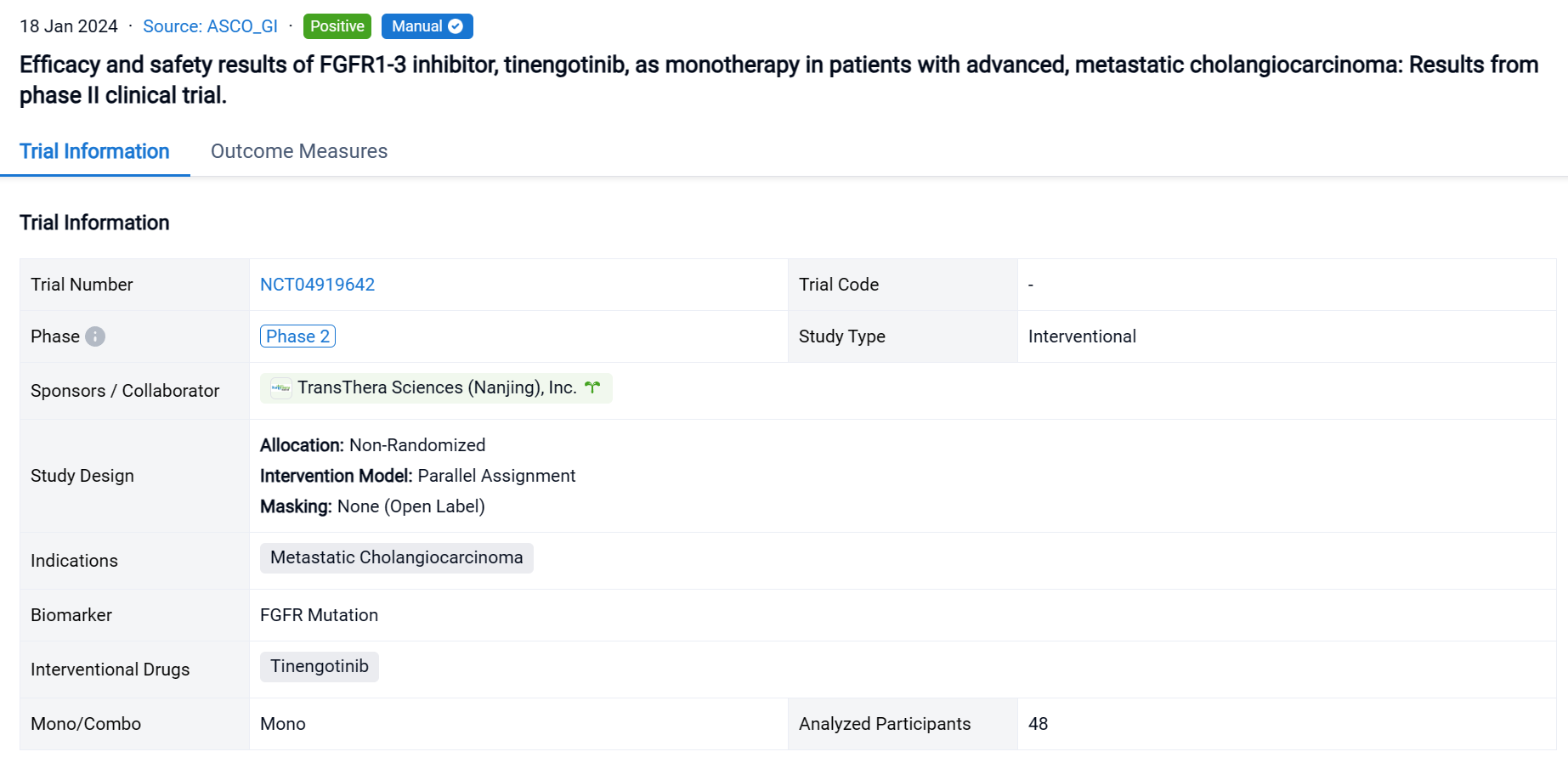
In the important Outcome Measures section, we provide both list and flowchart forms, which are convenient for you to overview the comparison group information and core indicator data.
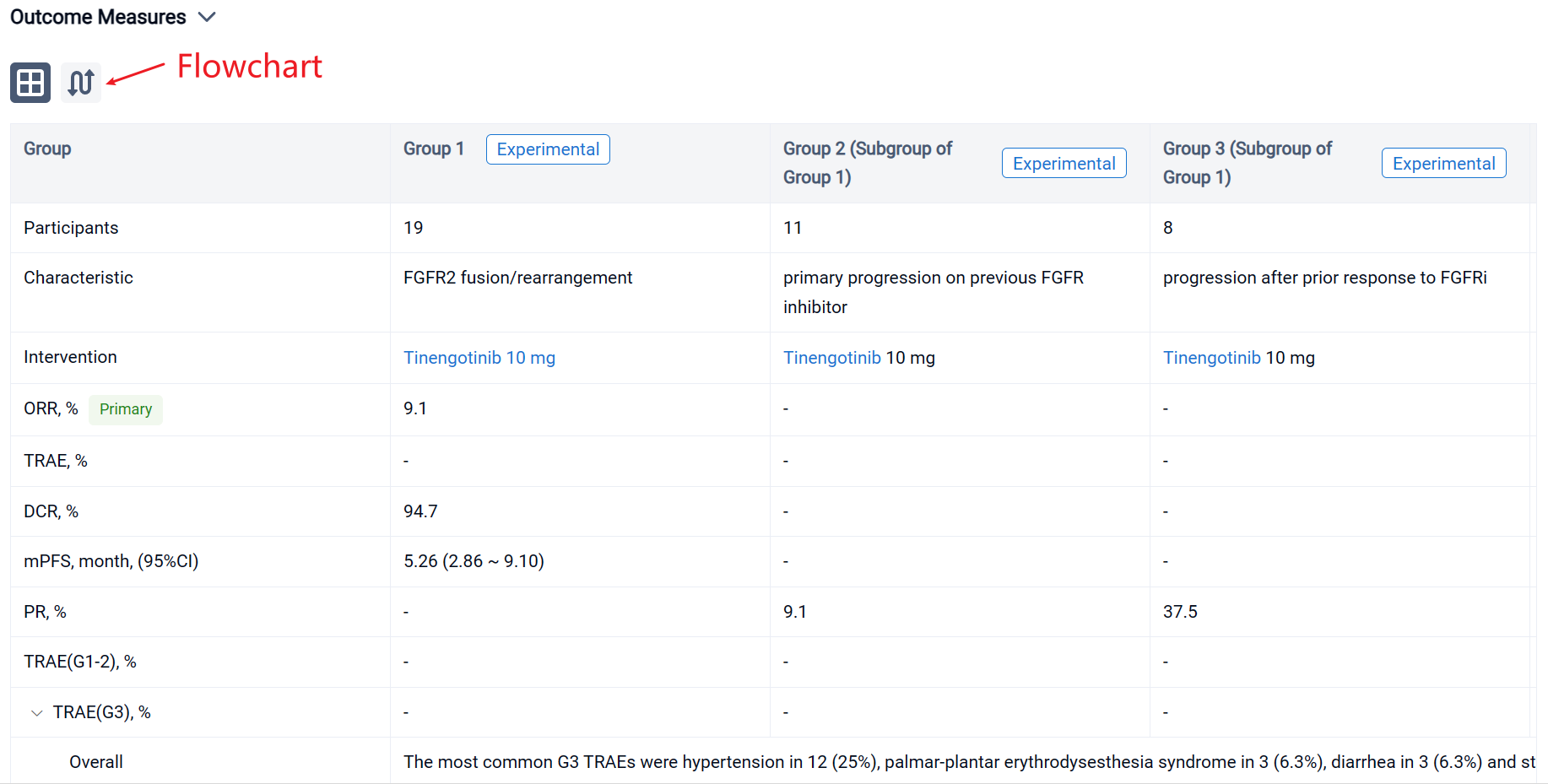
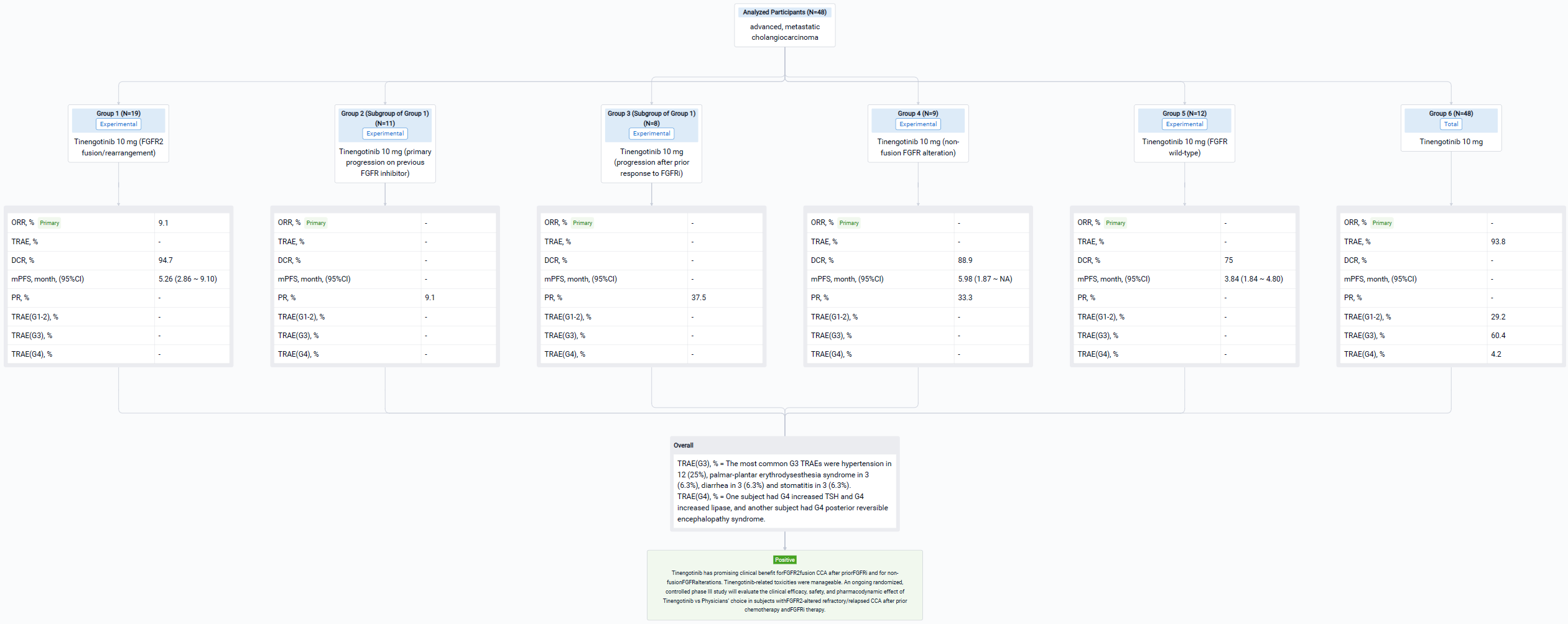
Finally, if you need to download these results, you can conveniently check the check boxes on the left side of the list, or directly click the "Export" button to download the data for personalized analysis and file sharing.
Click on the image below to embark on a brand new journey of drug discovery!
